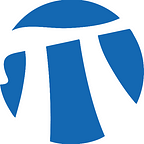PIMS Postdoctoral Fellow Christopher van Bommel: Quantum Walks and the Digital Revolution
Written by: Brittney Durston, PIMS Communications Coordinator
This month in the Emergent Research: The PIMS Postdoctoral Fellow Seminar, Christopher van Bommel will explore how the transmission of information from one part of the computer to another, can aid in the construction of a quantum computer.
How did you choose your research interests?
Growing up in Antigonish, Nova Scotia, I completed my undergraduate program at St. Francis Xavier University. Not only was this close to home, but going to a smaller undergraduate school provided great research opportunities. Through working on summer research projects, and attending and speaking at local conferences, I became more involved with combinatorics and pursued it as a field of study.
Through my PhD, I began to study quantum walks on graphs. The quantum walk model considers how quantum particles move through a network if we allow them to propagate naturally, with the goal of reaching a target site without external intervention. There are applications to implementing algorithms using a quantum computer, where knowing how to move information is essential for the various aspects to work together. I study how these particles interact, to determine which modifications could be put in place for the device to function properly, and achieve optimal state transfer. Right now, quantum computers are in the hands of large companies like Google and IBM, and aren’t commercially viable. So, for now, my research is focused more on the theoretical side, but being part of a larger multidisciplinary team, with mathematical modellers, computer scientists and physicists would be neat.
What is the best part of PIMS fellowship?
The opportunity to continue my research while getting access to PIMS’ brain trust has been great. Working with different collaborators has allowed me to view my research through a different lens. For example, with quantum particles, instead of looking for the exact point we need to get to, to get what we want, now looking at, if we slightly missed that point, are we still in the right area? Or is there a narrow range that we need to hit, to get to what we want? Understanding this question would allow us to determine the fault tolerance of quantum computers; that is, how susceptible to errors would the device be, if its internal clock is running slightly fast or slow. This could lead to the development of methods to correct such errors.
Having collaborators allows you to break away from your way of doing something, and be exposed to a new approach, or a new way of thinking about the problem. This helps to move research forward in a collaborative manner, with a more complete view of the problem and its applications.
Why math?
I like the challenge. The satisfaction of pushing forward with progress. The different mathematical areas playing a part is also interesting. It isn’t just graph theory or quantum theory, but number theory as well. Utilizing and understanding these different areas is important to figuring out the problems I work on. It also makes it interesting too, because sometimes the results are surprising.
What research opportunities have you seen emerge from the digital revolution we are experiencing?
The main impact for me, is collaboration easier. The ability to attend seminars from a distance has been great. It isn’t feasible to drive for hours to attend a seminar in person, but with many things moving online, you have the ability to attend whatever talk peaks your interest.
What were once local seminars, are now attended by an international audience. Having the opportunity to freely share information and knowledge within a global mathematics community has been great, and supports a more diverse community.
I was lucky enough to have local access to a great undergraduate program that helped to nurture my love of math, through combinatorics. The digital revolution addressed geographical disadvantages and increased the sharing of expert knowledge. Location is no longer a barrier to those wanting to pursue their research interests, and develop them as a field of study. Anyone wanting to learn more, can now do just that!
